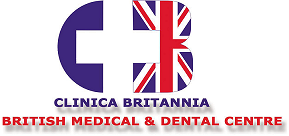Chronic lower respiratory diseases (CLRD) are a group of chronic diseases that affect the lower respiratory tract, including the lungs and bronchial tubes. These diseases include chronic obstructive pulmonary disease (COPD), asthma, and bronchiectasis. In this blog post, we will discuss the causes, symptoms, and treatment options for CLRD.
Causes of CLRD
The most common causes of CLRD are long-term exposure to respiratory irritants such as tobacco smoke, air pollution, and occupational dusts and chemicals. These irritants cause inflammation and damage to the airways, leading to the development of CLRD. Other risk factors for CLRD include a history of respiratory infections, genetics, and certain medical conditions.
Symptoms of CLRD
The symptoms of CLRD can vary depending on the specific disease, but the most common symptoms include:
- Shortness of breath: Difficulty breathing is a common symptom of CLRD and can be accompanied by wheezing or coughing.
- Chronic cough: A persistent cough is a hallmark symptom of CLRD and may produce mucus or phlegm.
- Chest tightness: Some people with CLRD may experience chest tightness or discomfort.
- Fatigue: People with CLRD may experience fatigue and weakness due to the increased effort required to breathe.
- Recurrent respiratory infections: People with CLRD may be more susceptible to respiratory infections, such as pneumonia.
Treatment of CLRD
The treatment of CLRD typically involves a combination of medications, lifestyle changes, and oxygen therapy. Some of the most common treatments for CLRD include:
- Medications: Bronchodilators, corticosteroids, and antibiotics may be prescribed to manage symptoms and prevent exacerbations.
- Lifestyle changes: Quitting smoking, avoiding respiratory irritants, and engaging in regular physical activity can help to improve lung function and reduce symptoms.
- Pulmonary rehabilitation: A structured program of exercise, breathing techniques, and education can help people with CLRD to improve their lung function and quality of life.
- Oxygen therapy: In some cases, supplemental oxygen may be necessary to help people with CLRD breathe more easily.
Prevention of CLRD
The best way to prevent CLRD is to avoid exposure to respiratory irritants such as tobacco smoke and air pollution. If you work in an occupation that exposes you to dusts and chemicals, it is important to wear proper protective equipment. Regular exercise and a healthy diet can also help to improve lung function and reduce the risk of developing CLRD.
In conclusion, CLRD is a group of chronic diseases that affect the lower respiratory tract and can significantly impact a person’s quality of life. The most common causes of CLRD are long-term exposure to respiratory irritants, and the most common symptoms include shortness of breath, chronic cough, and chest tightness. Treatment typically involves a combination of medications, lifestyle changes, and oxygen therapy, while prevention involves avoiding respiratory irritants and maintaining a healthy lifestyle. If you are experiencing symptoms of CLRD, it is important to consult with a healthcare professional for an accurate diagnosis and appropriate treatment.

